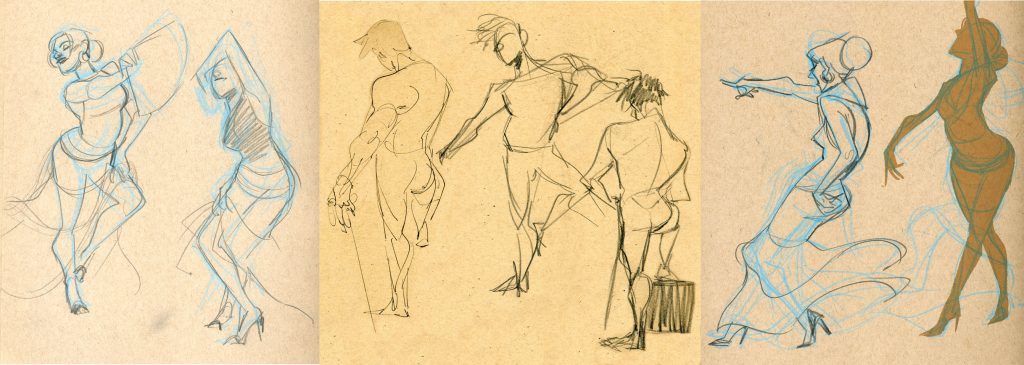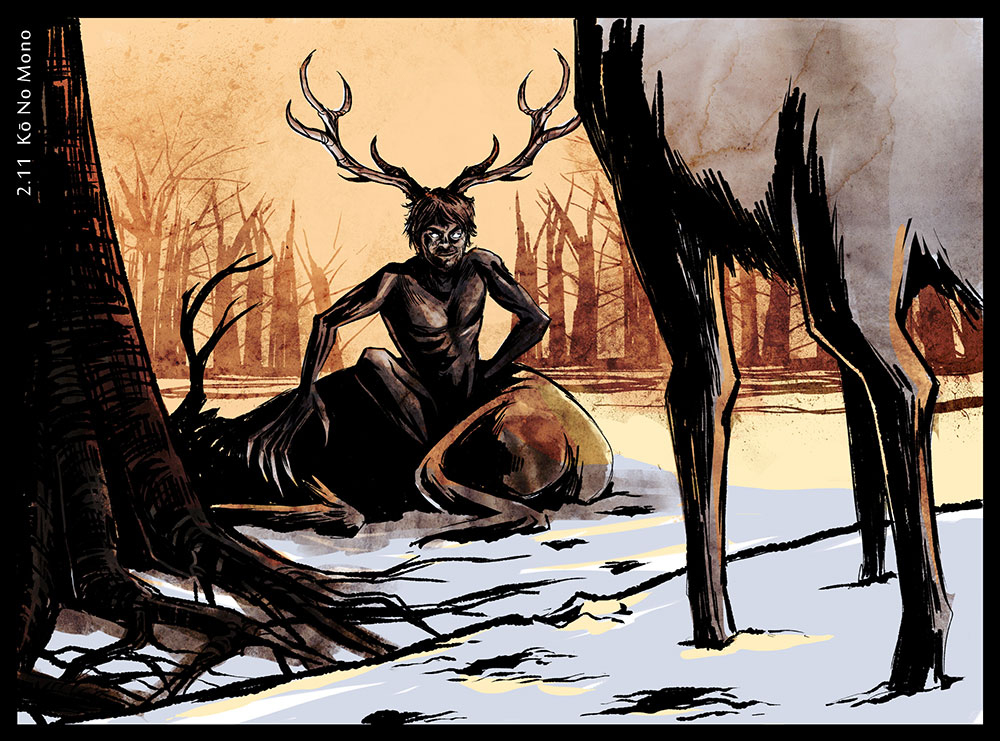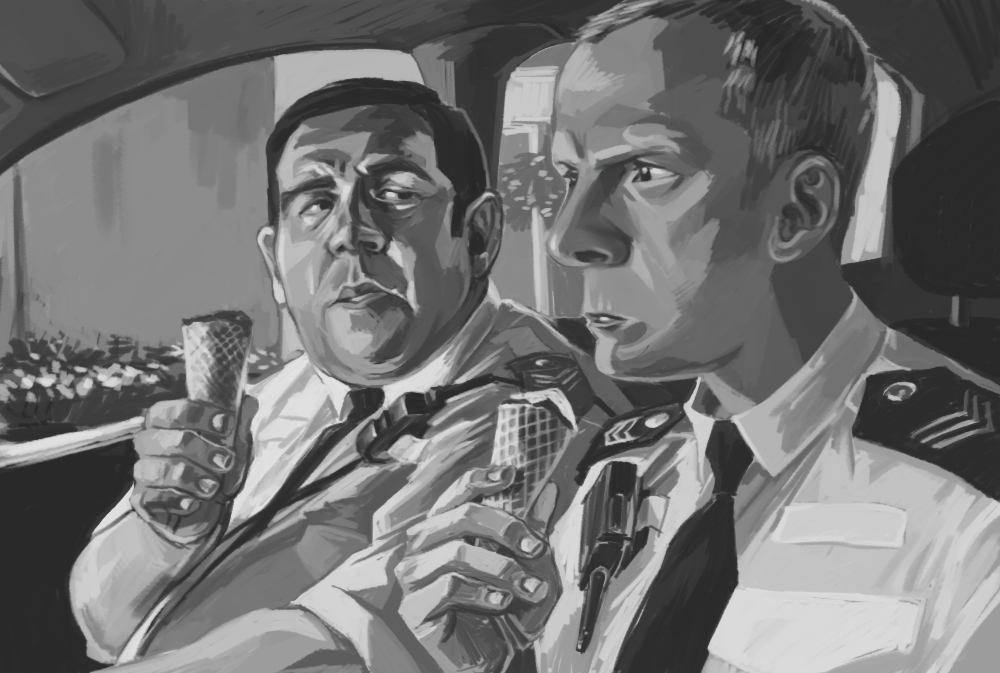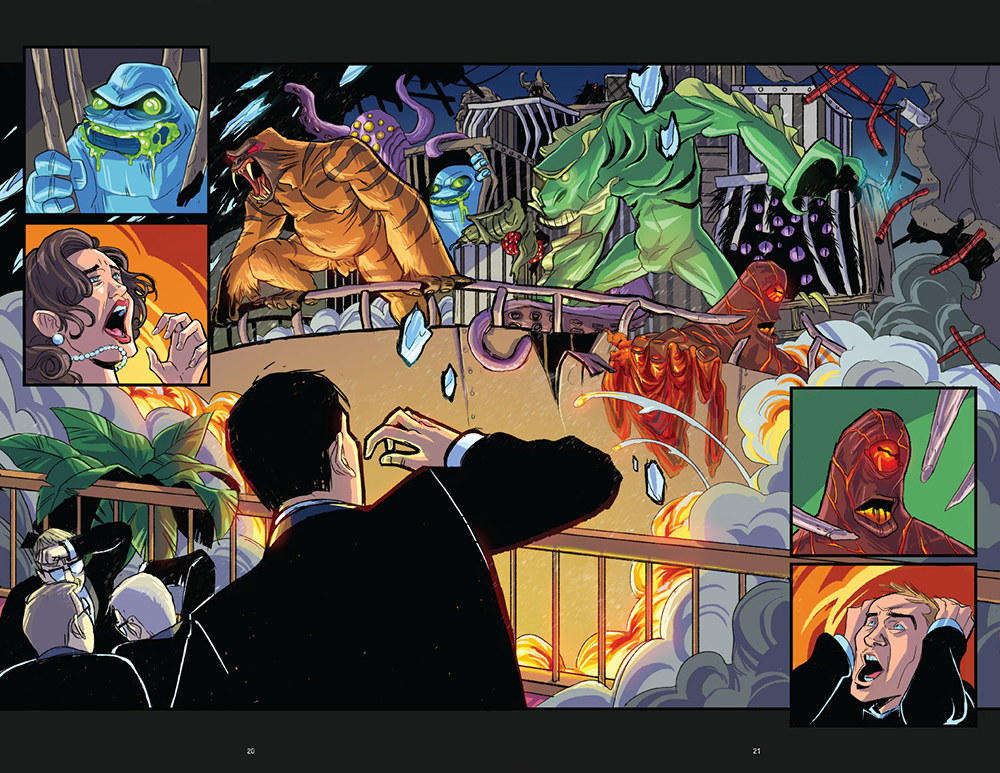SEQA Alumni Interviews: Kristal Babich
Kristal Babich graduated from SCAD in June 2012, with a B.F.A. in Sequential Art. Currently, she works for Netflix as a storyboard artist. Throughout her career Kristal has worked in multiple aspects of production, including clean up, color and character design. She has also been able to work on productions for various age groups, such as toddler and teens. You can see more of her work at pixiepunch.com
Where are you from?
I was born and raised in Miami, Fl. Though my family is all from Chile.
How did you find out about SCAD, and why did you decide to go?
This is a little complicated. I was originally studying to become a Biology teacher at the University of Miami, but I had a hard revelation about how unhappy I was because I didn’t have time to draw like I really wanted to. I took a break from school and drew a lot of comics and sold art at conventions.
3 years into that period of time I was diagnosed with MS, and with that looming over my head I thought long and hard about what I really wanted to do. I realized that I loved comics and I wanted to go to art school. So I began looking for comic related classes and that’s when I found out about SCAD. The SEQA department had what I was looking for, a curriculum based around storytelling and improving draftsmanship.
When you majored in sequential, did you want to storyboard as well?
No! When I took my first storyboarding class, I totally hated it. But the more I learned, and practiced, the more I started to love it.
When did you graduate, and what was your experience like in your first few months after graduation?
I graduated in 2012 at the height of the really bad recession that was plaguing most industries. I moved back home to Miami for my first year out of SCAD and struggled to find steady work. So I focused most of my time working on my portfolio.
Is there anything you wish you took advantage of/did at SCAD that you think others should?
I highly recommend everyone go to the free figure drawing offered on weekends. I would try to go as often as I could while in school, and it helped me become more confident in my figures. Once you’re no longer a student, those sessions get expensive! So take advantage of the free ones while you can. Even now as a professional in the animation industry, I go to figure drawing weekly.
What resources worked best for you/you recommend others take advantage of?
The figure drawing sessions! I can’t reiterate that enough.
The library and labs were my sanctuaries too. I got into a really good routine during my time there, where I would take all my classes in the morning, go grab food, and then go to the library or SEQA lab and work on my assignments every day until close. Doing things at a steady pace like that made sure all my assignments were completed and lowered the chances of having to do any all nighters. You’ll draw so much better if you can get some sleep!
“…go to the free figure drawing offered on weekends.”

Where are you currently working?
I’m currently a storyboard artist on Jorge Gutierrez’s Maya and The Three at Netflix.
Has having a background in sequential art helped/improved your storyboards? How?
I get a lot of compliments for my emphasis on storytelling. My SEQA background also helped my boarding be more cinematic and dynamic because of my strong grasp of perspective and composition. I’m good at following the 180 rule, and remembering anchor objects, and establishing a scene. All things emphasized in SEQA, and extremely important in animation. Clarity is key.
Has storyboarding helped/improved your more illustrative work?
Absolutely. My figures are more dynamic. And my compositions more cinematic. I also find myself adding a ton of story telling details in the background.
Is storyboarding on a pre-school/educational show different from working on something for an older audience? Are there any challenges?
Yes. The pacing is much slower. And you have to be more frugal in your cuts. We had to get our boards approved by a child psychologist for Tumble Leaf, and she would ask us to make the scenes longer to give kids a chance to take everything in. For Lego 2 and Maya, it’s not only an older audience, but the stories are epic action adventures. So the film making decisions have to be much more dynamic and exciting.
“Clarity is key”
What instances do you have to approach boarding differently?
Another thing to consider when boarding, is that because Tumble Leaf was stop motion, we had to be very conscious of camera as well as setting changes. Changing the camera angle or set meant having to reset a physical camera and all the lights on the animation stages. That’s very time consuming and expensive. Same with any complicated camera moves. That meant setting up and programming the VOLO motion control camera, which is also time consuming. So we had to be very efficient with our shot choices. And you also had to keep in mind the range you could point the camera, because in certain directions there would be no more set.
While for something like Lego 2, sometimes designs wouldn’t be finalized yet, so you had to put in a lot of stand ins or just a perspective grid to at least give an indication of the direction the characters are moving. Flexibility was the key.
Looking at your resume, it appears as though you’ve been able to work on different aspects of production, do you have a favorite?
I really prefer story, but getting to design things can be fun. I don’t often get to finish a drawing all the way to color on a regular story job.
Is it difficult working on different parts of production, or is refreshing to have different things to be working on?
I love doing little pieces of extra art and incidental designs if I’m asked to for the shows I’m on. On Tumble Leaf, I got to do a cute cover design for a book one of the characters is reading on camera. For Maya, I did some promotional sticker designs. It’s definitely fun to approach an assignment in a completely different way than usual.
I really enjoyed some of the more leadership type work I’ve gotten to do. I hope I get to do that more in the future.
Is it normal to work on multiple parts of production? Does it vary by studio? Vary by the individual?
It definitely varies. If you’re at a smaller studio, there’s more opportunity to wear a lot of hats because the crews are smaller. It’s mostly up to the individual to express the things they’re interested in though. There are a lot of story artists that have varied interests and skills. Some do extra designs. Some do script writing. Some even like to write music for their shows. Just make sure you don’t get taken advantage of, and get paid and credit for your extra work.

How has your career changed/progressed?
When I first went to SCAD I was ready to only do comics. But during my senior year I took the Pitch class and discovered that I really liked the idea of working more in the entertainment industry. Storyboarding in particular was such a natural progression for me as a comic artist.
I’ve worked as a board artist on very different projects. I began my career on Tumble Leaf, a preschool stop-motion show. Then I made the jump to a big budget CG animated feature on Lego 2. Now at Netflix, I’m seeing a whole new world of possibilities to explore.
What do you think has allowed you to succeed?
I have a really solid grasp of perspective, character acting, and storytelling. I’m also really versatile in being able to draw in multiple styles. My own style tends to be more realistic, but I can easily adapt to a more cartoony style to fit the show I’m working on.
I’m often complimented on my easy going personality, and how chill I can be even during stressful situations. I can take notes for a scene with a positive attitude, and give the director what they’re asking for quickly. I’m not afraid to speak up if I have an idea that I think will help make the story stronger, too. Ultimately, it’s my job to make the story as strong as possible, while navigating the director’s vision.
Has the industry surprised you at all? How and why?
People in the animation industry are really nice. Everyone’s trying to help their friends and look out for each other. When you hear the whole thing about connections being the way to get into the industry, it’s only a half truth.
It’s more about everyone wanting to work with the people that they trust and get along with. We spend so many hours together, in close quarters, talking about each other’s work in a very frank way. So you want your team full of people that aren’t afraid to tell you what isn’t working, while also willing to give you solutions, and not create unnecessary problems.
Another surprising thing I found was how HARD it is to make something good. There’s a million decisions that need to get made along the way. And any one of those can derail a project into being ‘bad’. Couple that with a complicated balance of pleasing studios, executives, directors, and art teams, and the path becomes even more treacherous. So when critiquing a piece of media online, maybe consider all of that before blaming any one person in particular.
Could you describe some challenges or obstacles that workers in your industry currently face? How have you dealt with them?
Lack of diversity has been a huge issue in all the entertainment industry. As a woman of color, that affects me even harder. I’ve joined organizations like Women In Animation, and they’ve provided lots of mentorship opportunities and help. I’ve done two mentorships through them, and this year I signed up to be a mentor for up and coming board artists as a way to give back.
On the subject of women in the industry, there also comes a discussion of sexism and harassment. Pay attention to the amazing artists that put a lot on the line to expose abusers in the industry. I’ve been lucky enough to join some groups where we can discuss those issues and help provide advice and emotional support to those that need it.
“Pay attention to the amazing artists that put a lot on the line to expose abusers in the industry.”
The subject of union vs non-union shows is also really important. Some studios are taking advantage of their artists and paying them low wages and not providing health care or benefits. It’s important to support artists that are fighting for unionization. Follow the Animation Guild to learn more about that, and help support those crews.
What do you keep in mind/think others should keep in mind when storyboarding?
Each shot you choose for a scene should be clear and have a reason to be there. Sometimes, ‘it looks awesome’ can be a reason, but if you can back it up with strong character or story motivation, it’s even better. Also, remember silhouettes while posing your characters. It’ll make the acting in your shots even stronger if the emotion can be read quickly.
Are there any specific elements that make boards stand out?
Perspective. Emotion. Humor.
Also, if a drawing is too ‘mumbly’ or ‘mushy’ it shows a lack of confidence and clarity. You don’t necessarily need to have the most beautifully drawn boards to be good, the story is always the most important element. So shot choices are key.
Don’t forget about hook ups! That’s something that will give away someone with inexperience.

Any advice for students when it comes to their educational career or their career in the industry?
Take your education seriously. Classes are expensive, and you should try to put forth as much effort as you can so you can grow as an artist. Put time into strengthening your artistic weaknesses. Discover what makes you the happiest to draw. And do that too! You deserve it.
Growing also means taking care of yourself, both physically and mentally. You need to sleep and eat and do all the things that will make your body happy. And if you need therapy, do that too, so your mental health can flourish. Creating those healthy boundaries and good working habits now, will make sure you don’t burn out now as a student, or later as a professional.
Anything Else:
Everyone is on their own personal artistic journey. I know it’s easy to see someone else’s success as our own failure, but it’s not. I started SCAD in my mid-twenties because I was still trying to figure out what I wanted to do. It’s ok to be unsure, and course correct as you go. And if that means my journey took a little longer, that’s ok. I got to do a lot of extra sightseeing along the way.
Try your best to look at other people’s work as a source of inspiration. As a higher goal to aspire to instead of comparing yourself to them. Try your best to not wallow in negativity about your own work, and see it more as room to improve and grow. Find the things you like in other people’s work, and think about why you love it. And see if you can find a good way to practice that thing you love, and incorporate it into your own work. And most importantly, find the things you love, and draw them A LOT. People will notice the work you do with a lot of heart. I promise.
